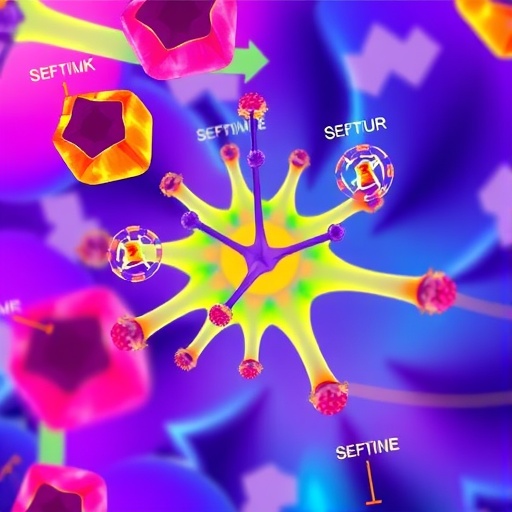In a groundbreaking advancement poised to redefine cellular microscopy, researchers from the University of Tokyo have unveiled a revolutionary microscope capable of capturing cellular signals across an unprecedented intensity range, surpassing conventional instruments by a factor of fourteen. This pioneering device operates without the need for fluorescent dyes or external labels, allowing scientists to observe live cells in their natural state over extended periods. Such a development heralds new possibilities for pharmaceutical testing and biotechnological quality control, where maintaining cellular integrity is paramount.
Microscopy has consistently been at the forefront of scientific discovery since its inception in the 16th century. Yet, each leap forward has necessitated balancing sensitivity, resolution, and specificity. Traditional quantitative phase microscopy (QPM) primarily utilizes forward-scattered light to reveal micro-structural details with a detection threshold limited to features larger than approximately 100 nanometers. This capability, while valuable for imaging cell morphology and organelles, falls short when probing the subcellular dynamics involving smaller biomolecules or particles.
Conversely, interferometric scattering (iSCAT) microscopy leverages backward-scattered light, enabling the detection of entities as diminutive as single proteins. This technique excels in tracking real-time dynamics of nano-sized particles but lacks the holistic spatial context provided by QPM. Researchers have thus faced a persistent challenge: either gain detailed nanoscale tracking or broader cellular context, but not both simultaneously.
Driven by a vision to capture the full spectrum of cellular features dynamically while avoiding invasive labeling techniques, the team led by Kohki Horie, Keiichiro Toda, Takuma Nakamura, and Takuro Ideguchi embarked on designing a microscope system that integrates the strengths of both QPM and iSCAT methodologies. Their innovative bidirectional quantitative scattering microscope collects and analyzes both forward and backward scattered light within a single measurement, offering a comprehensive snapshot of cellular activity spanning multiple scales.
Central to the instrument’s design is the ability to separate signals traveling in opposite directions without intermixing or introducing excessive noise—a feat that proved especially challenging given the subtlety of the signals involved. Advanced optical filters, precise timing synchronization, and sophisticated computational algorithms collaboratively disentangle forward and backward scattering information, preserving fidelity and enhancing signal-to-noise ratios.
To validate their system’s capabilities, the researchers focused on observing apoptotic processes—cell death pathways marked by intricate morphological and molecular changes. By recording images encoding bidirectional light scattering data, they could simultaneously track microscale cellular structures undergoing transformation and nanoscale particles exhibiting dynamic motion. This dual-scale visualization provides unprecedented insights into the coordinated behavior of cellular components during physiological events.
Beyond tracking, the dual-signal approach allows the simultaneous estimation of critical particle properties, including size and refractive index. The refractive index informs on how light propagates through or bends around particles, offering clues about their composition and state. Such multiparametric measurements open new avenues for non-invasively characterizing extracellular vesicles like exosomes or even viral particles, fields of immense interest for diagnostics and therapeutics.
Looking ahead, the team aspires to refine their technique further to detect even smaller particles, such as exosomes and viruses, which present unique challenges due to their minuscule size and subtle optical signatures. They envision coupling their microscope with advanced cellular control systems to manipulate and observe cell death processes in real time, confirming findings through complementary methods and thereby expanding the boundaries of live-cell imaging.
This innovative microscopy approach represents a significant stride in cell biology, combining methodological rigor, technical sophistication, and practical applicability. By transcending previous limitations, it promises to accelerate discoveries in cellular dynamics, disease pathology, and drug development, fully harnessing light’s bidirectional scattering properties to illuminate the hidden micro and nanoscale world within living cells.
Subject of Research: Not applicable
Article Title: Bidirectional quantitative scattering microscopy
News Publication Date: 14-Nov-2025
Web References:
10.1038/s41467-025-65570-w
Image Credits: Horie et al 2025
Keywords
Bidirectional microscopy, quantitative scattering, live-cell imaging, label-free microscopy, forward and backward scattering, nanoscale particle detection, interferometric scattering, quantitative phase microscopy, cellular dynamics, refractive index estimation, exosomes, virus detection
Tags: biotechnological quality control methodscellular microscopy advancementsfluorescent dye alternativesGreat Unified Microscopeinterferometric scattering microscopy benefitslive cell imaging techniquesmicroscopic imaging without labelsnanoscale visualization technologiespharmaceutical testing innovationsquantitative phase microscopy limitationsreal-time cellular dynamics trackingUniversity of Tokyo research breakthroughs




![Nickel-Catalyzed Regioselective Hydrogen Metallation Cyclization of Alkynylcyclobutanones Enables Synthesis of Bicyclo[2.1.1]hexanes](https://bioengineer.org/wp-content/uploads/2025/11/Nickel-Catalyzed-Regioselective-Hydrogen-Metallation-Cyclization-of-Alkynylcyclobutanones-Enables-Synthesis-of-120x86.jpeg)
